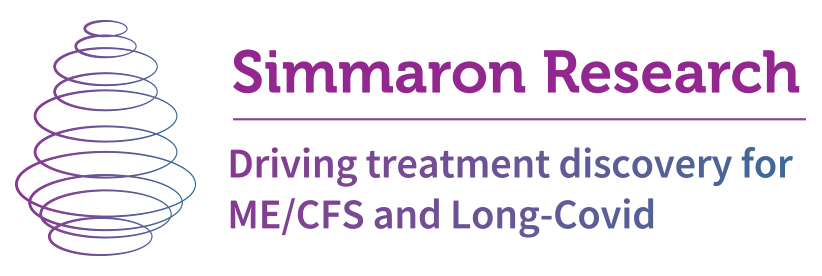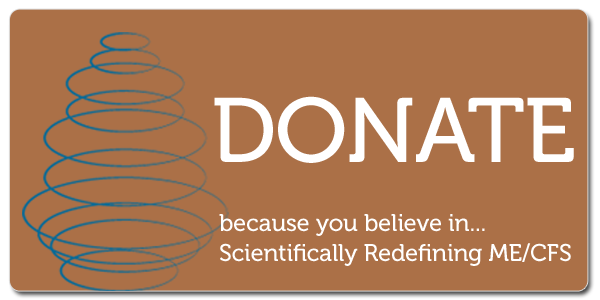Could Chronic Fatigue Syndrome (ME/CFS) Be a Chronic Form of Sepsis?
"In this monograph I would like to explore the concept of neuro-immune fatigue as a metabolic illness resulting from a series of events beginning with an infection, toxic exposure or neurologic injury." Dr. David Bell, 2007
This is one of a series of blogs highlighting hypotheses mostly written by doctors or other professionals with ME/CFS, or in this case, doctors who have cared for them. The hypothesis examined in this case: Dr. Bell's idea, produced in his monograph, "Cellular Hypoxia and Neuro-immune Fatigue", that chronic fatigue syndrome (ME/CFS) could be a kind of "slow sepsis".Bell's “Cellular Hypoxia” book was published in 2007, long before he was probably acquainted with Dr. Naviaux's and others’ work and before the recent explosion of interest in cellular energy production in ME/CFS. Naviaux and others would probably smile, though, at Bell's prediction that with ME/CFS and other diseases, "we may be witnessing the emergence of the next era of medicine: the diagnosis and treatment of cellular metabolic diseases”.Sepsis is a life-threatening response to infection or trauma that can lead to tissue damage, organ failure, and death. In some ways, sepsis sounds similar to autoimmunity. For reasons the medical profession does not understand, sepsis begins when the immune system resets itself, stops fighting pathogens, and turns on the body.The results are often devastating. The near complete body breakdown that results makes sepsis the most expensive disease hospitals treat. Forty percent of patients with severe sepsis do not survive.
Chronic Fatigue Syndrome (ME/CFS) - A Mild but Chronic State of Septic Shock?
ME/CFS is obviously not sepsis, but it does share some interesting characteristics. With his "cellular hypoxia" monograph published in 2007, Dr. David Bell suggested that people with ME/CFS may exist in a "mild, but chronic state of septic shock". Bell came to this conclusion after finding that sepsis and ME/CFS produces what he believed is a similar kind of oxygen dysfunction. In sepsis and in ME/CFS, Dr. Bell notes that oxygen is actually abundant: it's abundant in the air, the lungs and the blood of ME/CFS patients, but it's just not getting taken up by the tissues.Bell reports that in septic shock, the following events occur (note the last one):
- a serious infection occurs which -
- results in the production of cytokines which -
- increases nitric oxide levels which then -
- interfere with the production of cellular energy.
Bell noted that when nitric oxide blocks the flow of oxygen in severe septic shock, a patient can still die despite doctors giving him/her as much blood and oxygen as they need.Bell suggests a similar process to sepsis occurs more gradually in ME/CFS. First, an initiating infection or toxic exposure triggers the immune system to produce pro-inflammatory cytokines and nitric oxide (NO). From there, NO increases peroxynitrite and superoxide (Martin Pall's hypothesis), which causes oxidative stress and interferes with mitochondrial function.Ultimately, the cell becomes hypoxic (oxygen-starved), and neuropathies and autoimmune and other problems develop.The idea that impaired oxygen intake might be limiting energy production has gained some currency since Bell wrote his monograph. Vermoulen's exercise studies suggest that impaired oxygen intake, not mitochondrial problems, is the key issue in energy generation. The early stages of Ron Davis's collaboration with an San Jose State University bio-engineer suggest that the red blood cells may have difficulty getting to the tissues. Other researchers have found autoantibodies to receptors that open and close the blood vessels in a subset of ME/CFS patients.Last year, Chris Armstrong in, The “Starvation” Disease? Metabolomics Meets Chronic Fatigue Syndrome Down Under", took the sepsis/ME/CFS notion one step further when he noted that many of the metabolomic anomalies (reduced amino acids, reduced lipids and increased glucose levels) found in ME/CFS are also found in sepsis and starvation.Remarking that during sepsis, immune cells rely entirely on glycolysis to proliferate, Armstrong speculated, much as Bell did years earlier, that an infection or autoimmune process might have triggered a sepsis-like condition which lead to a state of chronic metabolic starvation.
A last tie to sepsis is an incidental one. Ron Davis and Ron Tompkins of the Open Medicine Foundation worked on sepsis together. Based on his work there, Davis has said ME/CFS could be a kind of atypical sepsis.
Two Vascular Diseases?
 Bell noted that a vasculopathy - inflammation of the blood vessels - was the first symptom (reddened cheeks) he noticed in ME/CFS. (That suggested to him that a parvovirus may have swept through his area.)Cardiovascular issues could be central in both diseases. Perhaps the most interesting possible intersection between sepsis and ME/CFS occurs in the blood vessels - specifically the small blood vessels.Recently an NIH Panel redefined sepsis as: “severe endothelial (blood vessel) dysfunction syndrome in response to intravascular and extravascular infections causing reversible or irreversible injury to the microcirculation responsible for multiple organ failure”; i.e. at its heart, sepsis is a small blood vessel disease caused by a pathogen attack - which is complicated by the immune storms that follow.Sepsis has also been called a "malignant intravascular inflammation" characterized by excessive coagulation which blocks blood flows to the small blood vessels, reducing blood volume and lowering blood pressure.Indeed, as Bell points out several times in his monograph, vascular issues show up again and again in ME/CFS, POTS, orthostatic intolerance and similar, related diseases.
Bell noted that a vasculopathy - inflammation of the blood vessels - was the first symptom (reddened cheeks) he noticed in ME/CFS. (That suggested to him that a parvovirus may have swept through his area.)Cardiovascular issues could be central in both diseases. Perhaps the most interesting possible intersection between sepsis and ME/CFS occurs in the blood vessels - specifically the small blood vessels.Recently an NIH Panel redefined sepsis as: “severe endothelial (blood vessel) dysfunction syndrome in response to intravascular and extravascular infections causing reversible or irreversible injury to the microcirculation responsible for multiple organ failure”; i.e. at its heart, sepsis is a small blood vessel disease caused by a pathogen attack - which is complicated by the immune storms that follow.Sepsis has also been called a "malignant intravascular inflammation" characterized by excessive coagulation which blocks blood flows to the small blood vessels, reducing blood volume and lowering blood pressure.Indeed, as Bell points out several times in his monograph, vascular issues show up again and again in ME/CFS, POTS, orthostatic intolerance and similar, related diseases.
Blood Pressure
Altered blood pressure is another sign of cardiovascular issues in both diseases. A sudden drop in blood pressure associated with an infection is an indication that sepsis has begun.Blood pressure regulation problems are found in ME/CFS but anecdotal reports suggest that declines in blood pressure may be common as well. Bell writes that most, but not all, people with ME/CFS have low blood pressure - something that the medical profession has little interest in - unless you're in the ICU. It's ironic, Bell notes, that an ME/CFS patient with a blood pressure 75/40 will get little notice but put someone with that blood pressure in an intensive care unit and the sirens will go off.
Blood Volume
Low blood volume is common in sepsis and great efforts are made to increase it. Low blood volume, of course, is very common in ME/CFS as well. Sometimes blood volume is so low in ME/CFS as to stagger the mind, yet it's received little attention.Increasing blood volume can, of course, be helpful in ME/CFS, but is not as helpful as one would think, given the low blood volumes found. (Could microcirculatory problems be to blame?)
Blood Flows
In sepsis, blood flows in the microcirculation become so low as to damage the organs. That doesn't appear to happen in ME/CFS, but even back in 2007, Bell was able to point out studies showing reduced blood flows to the brain and muscles was present.
Pathogen Damage
Sepsis was long thought to result from an overwhelming immune response to an infection but that's no longer thought to be true. In 2010, however, that changed. The Working Group on Blood Systems Response to Sepsis, convened by the NIH's National Heart Lung and Blood Institute (NHLBI), concluded that a cytokine cascade was not, as had been previously believed, the main culprit. The real issue in sepsis, they asserted, is damage to the blood vessels caused by an uncontrolled infection.The damage is then exacerbated by many inflammatory factors (including Dr. Bell's nitric oxide metabolites). A period of reduced immune activation or "immuno-paralysis" (caused by an overactive anti-inflammatory response/immune exhaustion) that follows then sets the stage for the reactivation of latent viruses such as EBV, HSV-1 and others which amplify the damage.The immune response is still recognized to be important, particularly in the later stages of the disease, but the infections themselves and the damage they do mayt be the key factor.That's an intriguing finding given that the biggest factor in determining who gets ME/CFS and who doesn't after an infection appears to be the severity of the initial infection. Could a severe infection kick off a low-grade, chronic type of sepsis in ME/CFS?It's possible that the difficulty NK cells - and probably T-cells - have in killing off pathogens in ME/CFS might just give those pathogens enough time to damage the blood vessels. Or, perhaps in other cases, an autoimmune process is sparked which does the same. (An autoimmune process appears to occur in some types of POTS).
Post-Sepsis Syndrome (PSS)
Interestingly, sepsis appears to be another potential trigger for chronic fatigue syndrome (ME/CFS). Post-sepsis syndrome (PSS) - a condition occurring in about 50% of sepsis survivors - indicates that surviving sepsis - perhaps like surviving the infection, injury or whatever that appears to trigger the onset of ME/CFS - is often not nearly the end of the story.Extreme fatigue, problems with cognition, muscle and joint pains, insomnia and other sleep problems, that can last months or even years are common outcomes of sepsis. In fact, a sepsis trust has produced a support document specifically for post-sepsis patients experiencing "chronic fatigue".The medical profession has been content thus far to simply to document the extent of PSS - with little attempt to understand or treat it. The causes of the fatigue and chronic pain in PSS are completely unknown. This is despite the fact that several studies have made clear that PSS is a significant and enduring problem: statistics suggest that about 250,000 people a year come down with PSS.The disease is clearly pathophysiological, but the only help The Sepsis Alliance could provide for the many chronically ill survivors was to get emotional and psychological support (counseling, cognitive behavioral therapy or neuropsychiatric assessment) or physical therapies.
Treatment
Sepsis is also confusing to treat. The first line of defense is a hearty dose of antivirals, fluid support, etc. From there it gets trickier. People with sepsis may have a pro-inflammatory phase followed by immune suppression (or both may be occurring at the same time). (Could ME/CFS be a kind of drawn-out sepsis with a longer pro-inflammatory phase followed by immune exhaustion?)Researchers and doctors focused on reducing pro-inflammatory responses, but drug trials targeting the pro-inflammatory response have been ineffective. Now, researchers are targeting immune checkpoints in hopes of unleashing the power of the innate immune system.Check out a more technical take on sepsis and ME/CFS which brings Systemic Inflammatory Response Syndrome (SIRS) into the equation: IS SIRS, CARS, MARS – AND NOW PICS – CAUSING THE “CHAOS” IN ME/CFS?
Conclusion
 Chronic fatigue syndrome (ME/CFS) is not sepsis but the two diseases do share some intriguing characteristics. Both sepsis and ME/CFS often start with an infection; oxygen delivery to the tissues appears to be a problem; blood pressure, blood volume and blood flows are affected, and sepsis often results in a syndrome that symptomatically looks very much like ME/CFS.As Roberts points out what's happening in the very, very complex disease known as sepsis is still unclear. Whether or not the new drugs being developed for sepsis will play a role in ME/CFS is, of course, unknown as well. Drugs being developed to turn off the anti-inflammatory response are intriguing given the state of "immune exhaustion" that some studies have found in ME/CFS. If ME/CFS does turn out to be a kind of "slow sepsis" it will be a good idea to keep an eye on the developments there.Stevens, in fact, suggests that the ME/CFS and sepsis communities stay in close touch.
Chronic fatigue syndrome (ME/CFS) is not sepsis but the two diseases do share some intriguing characteristics. Both sepsis and ME/CFS often start with an infection; oxygen delivery to the tissues appears to be a problem; blood pressure, blood volume and blood flows are affected, and sepsis often results in a syndrome that symptomatically looks very much like ME/CFS.As Roberts points out what's happening in the very, very complex disease known as sepsis is still unclear. Whether or not the new drugs being developed for sepsis will play a role in ME/CFS is, of course, unknown as well. Drugs being developed to turn off the anti-inflammatory response are intriguing given the state of "immune exhaustion" that some studies have found in ME/CFS. If ME/CFS does turn out to be a kind of "slow sepsis" it will be a good idea to keep an eye on the developments there.Stevens, in fact, suggests that the ME/CFS and sepsis communities stay in close touch.
It seems logical that the ME/CFS community should begin to share knowledge and resource with the sepsis organizations such as International Sepsis Forum (ISF), Global Sepsis Alliance and Sepsis Trust and Post Sepsis Syndrome patients. The curative challenges ahead are monumental, involving complex pathways which have yet to be researched, and will no doubt result in individualized treatments.

